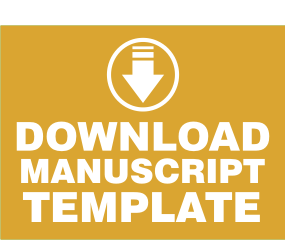THE USE OF QUALITATIVE APPROACH IN INFORMATION SYSTEM RESEARCH
Study of Digital Fencing
Abstract
During the pandemic, several governments choose to emphasize the strict approach to immigration on their border. This approach focuses on screening, tracing, and quarantine mechanisms. One of the countries that prioritize this method rather than relying on vaccination is Taiwan. This approach is also heavily affected by information technology advancement in government. This paper will discuss the implementation of digital fencing in Taiwan, using a qualitative method and personal narrative elaboration. The informants of this study are foreigners who entered and exited Taiwan during the COVID-19 pandemic and will provide a lot of resourceful data based on their experience. The result indicates that the socio-technical approach helps Taiwan in implementing digital fencing to reduce the risk of COVID-19.
Downloads
References
Budd, Jobie, Benjamin S. Miller, Erin M. Manning, Vasileios Lampos, Mengdie Zhuang, Michael Edelstein, Geraint Rees, et al. 2020. “Digital Technologies in the Public-Health Response to COVID-19.” Nature Medicine 26(8): 1183–92. doi:10.1038/s41591-020-1011-4.
Cheng, Hao Yuan, and Ding Ping Liu. 2022. “Early Prompt Response to COVID-19 in Taiwan: Comprehensive Surveillance, Decisive Border Control, and Information Technology Support.” Journal of the Formosan Medical Association. doi:10.1016/j.jfma.2022.11.002.
Cheng, Hao-Yuan, Shu-Ying Li, and Chin-Hui Yang. 2020. “Initial Rapid and Proactive Response for the COVID-19 Outbreak — Taiwan’s Experience.” Journal of the Formosan Medical Association 119(4): 771–73. doi:10.1016/j.jfma.2020.03.007.
Chung, S.L, Marlow S, Tobias N, Alogna I, and Alogna A. 2020. “A Rapid Systematic Review and Case Study on the Test, Contact Tracing, Testing, and Isolation Policies for Covid-19 Prevention and Control.” MedRxiv: 1–35.
Clandinin, F. M., and D.J. Connelly. 2001. “Narrative Inquiry: Experience and Story in Qualitative Research.” 1: 107–11.
Creswell, J.W. 2014. “Research Design: Qualitative, Quantitative, and Mixed Methods Approaches, 4th Ed.” Thousand Oaks, California: Sage Publication.
Dewi, Arlina, Achmad Nurmandi, Erna Rochmawati, Eko Priyo Purnomo, Muhammad Dimas Rizqi, Abitassha Azzahra, Samantha Benedictos, Wahdania Suardi, and Dyah Tri Kusuma Dewi. 2020. “Global Policy Responses to the COVID-19 Pandemic: Proportionate Adaptation and Policy Experimentation: A Study of Country Policy Response Variation to the COVID-19 Pandemic.” Health Promotion Perspectives 10(4): 359–65. doi:10.34172/hpp.2020.54.
Dishman, Lihua, and Vicki Schroeder. 2020. “A COVID-19 Patient’s Experience: Engagement in Disease Management, Interactions with Care Teams and Implications on Health Policies and Managerial Practices.” Patient Experience Journal 7(2): 33–38. doi:10.35680/2372-0247.1487.
Global Legal Research Directorate. 2020. “Regulating Electronic Means to Fight the Spread of COVID-19.”
Hidayat, M., Wijaya, B. A., Samudro, B. L., & Hayat, M. A. (2020). THE IMPORTANCE OF PUBLIC TRUST IN GOVERNMENT POLICIES IN EFFORTS TO ACCELERATE THE MANAGEMENT OF THE COVID 19 PLAGUE. DIA Jurnal Ilmiah Administrasi Publik, 18(2), 179–186. https://doi.org/10.30996/dia.v18i2.4411
Jian, D, CM Chen, CY Lee, and Liu. 2017. “Real-Time Surveillance of Infectious Diseases: Taiwan’s Experience.” Heal. Secur 15(2): 144–53.
Lin, Cheryl, Wendy E. Braund, John Auerbach, Jih Haw Chou, Ju Hsiu Teng, Pikuei Tu, and Jewel Mullen. 2020. “POLICY REVIEW Policy Decisions and Use of Information Technology to Fight COVID-19, Taiwan.” Emerging Infectious Diseases 26(7): 1506–12. doi:10.3201/eid2607.200574.
O’Brien, James, and George Marakas. “Management Information System.”
Patel, J, and D Sridhar. 2020. “We Should Learn from the Asia–Pacific Responses to COVID-19.” Lancet Reg.Heal. Pacific 5.
S, Chen. 2021. “Taiwan’s Experience in Fighting COVID-19.” Nat. Immunol 22(2): 393–94.
Sarker, Suprateek, Sutirtha Chatterjee, Xiao Xiao, and Amany Elbanna. 2019. “The Sociotechnical Axis of Cohesion for the IS Discipline: Its Historical Legacy and Its Continued Relevance.” MIS Quarterly 43(3): 695–719. doi:10.25300/MISQ/2019/13747.
Sayampanathan, Andrew A, Cheryl S Heng, Phua Hwee Pin, Junxiong Pang, Teoh Yee Leong, and Vernon J Lee. 2021. “Infectivity of Asymptomatic versus Symptomatic COVID-19.” The Lancet 397(10269): 93–94. doi:10.1016/S0140-6736(20)32651-9.
Siponen, M, and T Klaavuniemi. 2021. “Demystifying Beliefs about the Natural Sciences in Information System.” J. Inf. Technol 36(1): 56–68.
Summers, Jennifer, Hao-Yuan Cheng, Hsien-Ho Lin, Lucy Telfar Barnard, Amanda Kvalsvig, Nick Wilson, and Michael G Baker. 2020. “Potential Lessons from the Taiwan and New Zealand Health Responses to the COVID-19 Pandemic.” The Lancet Regional Health - Western Pacific 4: 100044. doi:10.1016/j.lanwpc.2020.100044.
Sutrabri, Tata. 2012. Konsep Sistem Informasi.
Takefuji, Yoshiyasu. 2021a. “Analysis of Digital Fences against COVID-19.” Health and Technology 11(6): 1383–86. doi:10.1007/s12553-021-00597-9.
Takefuji, Yoshiyasu. 2021b. “Artificial Intelligence Suggests That UAE Needs to Mitigate the Small COVID-19 Resurgence.” Dubai Medical Journal 4(1): 74–76. doi:10.1159/000514590.
Wang, C. Jason, Chun Y. Ng, and Robert H. Brook. 2020. “Response to COVID-19 in Taiwan.” JAMA 323(14): 1341. doi:10.1001/jama.2020.3151.
Wong, Joseph. Combating COVID-19 in Democratic Taiwan and South Korea. http://online.ucpress.edu/currenthistory/article-pdf/119/818/210/410057/curh.2020.119.818.210.pdf.
World Health Organization. 2021. “WHO Coronavirus Overview.”
Yanuar, I. E., & Hijri , Y. S. (2022). WADAH PECEL AE: STATISTICAL DATA SERVICE INNOVATION IN THE COVID-19 PANDEMIC. Dia, 20(01), 227–241. https://doi.org/10.30996/dia.v20i01.6448
Yeh, Ming Jui, and Yawen Cheng. 2020. “Policies Tackling the COVID-19 Pandemic: A Sociopolitical Perspective from Taiwan.” Health Security 18(6): 427–34. doi:10.1089/hs.2020.0095.
Copyright (c) 2024 Rino Ardhian Nugroho, Septyanto Galan Prakoso, Theresia Adinda Kusuma Astuti, Kartika Nur Hidayati, Is Hadri Utomo, Roisa Nur Hanifah (Author)

This work is licensed under a Creative Commons Attribution-ShareAlike 4.0 International License.
The DiA journal allows authors to retain the copyright of their papers without limitation. Authors may grant publishers non-exclusive publishing rights to publish articles. Granting first publishing rights to publishers also qualifies as unlimited copyright (because there are no restrictions imposed by publishers on author copyright).










